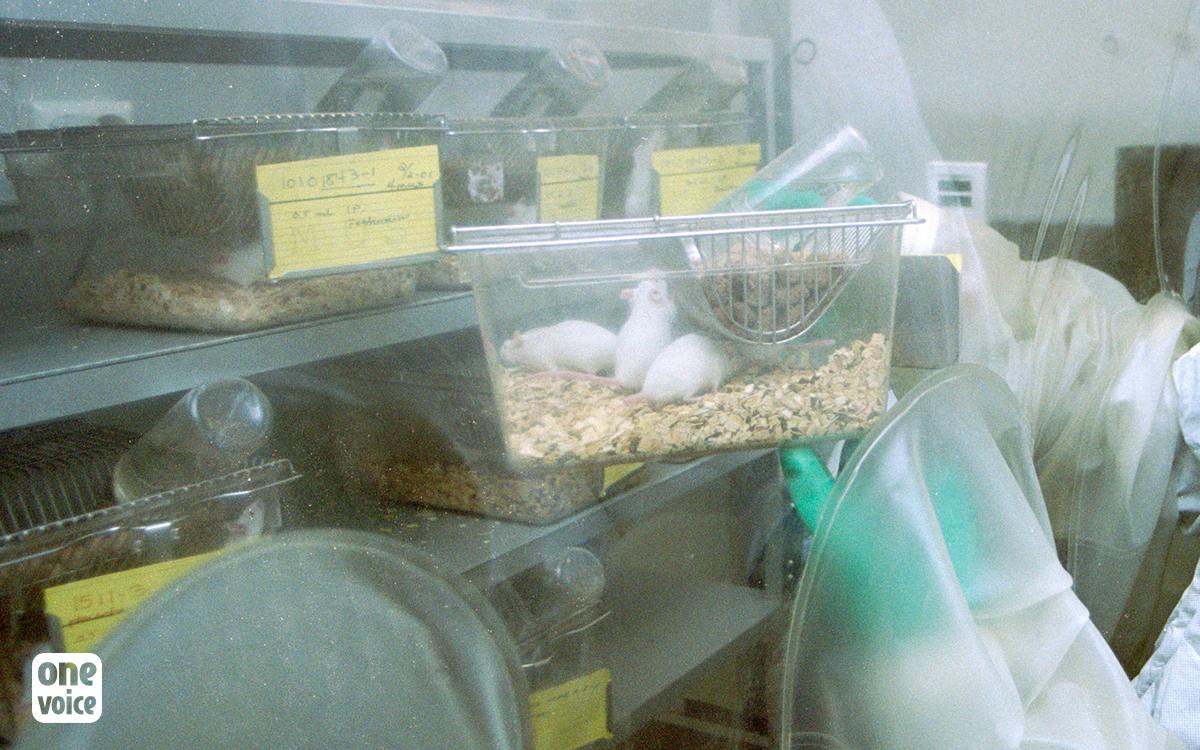
2018: the sad figures for vivisection in France are out
We had been awaiting them without much hope. The 2018 figures for animal experimentation in France have been published. Once again almost 2 million animals were used.
We had been awaiting them without much hope. The 2018 figures for animal experimentation in France have been published. Once again almost 2 million animals were used.
In February we revealed how the figures for vivisection had been manipulated after the statistics for Europe were published.
Now the figures for France have been published, and there has been no progress!
Almost 2 million victims
1,910,519 victims were used in experiments, including 120,265 in lethal procedures and 357,353 in experiments categorised as severe.
Why? Because although nothing can justify the suffering of animals exploited in laboratories it is even more shocking to note that 36.2% were used for basic research!
According to INSERM (Institut national de la santé et de la recherche médicale – National Institute for Health and Medical Research) the official definition of basic research is:
«Expanding horizons in the life and health sciences, and improving our understanding of biological phenomena, fundamental research is first and foremost a source of knowledge. The results of this exploratory research can be hard to predict, but it can also be particularly effective in revealing the totally novel concepts that are the drivers of progress and innovation.»
In other words there is no ‘precise’ objective, it’s merely groping in the dark.
When one is aware of the limits and deficiencies it is no less shocking that 27% of animals are used for developing and manufacturing medicaments and food and conducting quality and safety tests. Moreover it is those experiments that mainly use our friends – dogs.
Appalling figures
The main victims are (of course?) the unfortunate mice (62% of animals used), and despite the European directives our companions are not spared:
- 4,219 dogs used – 141 in severe and 202 in lethal procedures;
- 1,185 cats used – 5 in severe and 4 in lethal procedures;
- 482 horses and other equines used – 6 in severe and 5 in lethal procedures.
As for our primate cousins, from marmosets to macaques, 3,510 were used. No great apes, obviously, but it is known that partnerships mean that some research is outsourced to laboratories in other countries.
Reused, subjected to repeated suffering
Many animals are reused in several experiments. Most of these are reptiles (mainly viviparous lizards, 99%), then goats (78%), horses and other equines (75%) and cats (63%). Our cousins are also often reused: marmosets (71%), baboons (53%), rhesus monkeys (45%) and macaques (24%).
Of course these figures indicate that the number of lives taken is lower, but at what price! The increase in the length of the ordeal, even though not in its intensity, cannot be justified.
It is time for French research to make pertinent choices both in progress and in ethics. In the case of botulinum toxin, many lives can be saved using alternative methods, some of which already exist or soon will. And rather than sacrificing even more dogs by using those from pet-breeders, it would put an end to this senseless and shameful practice.
Translated from the French by Patricia Fairey